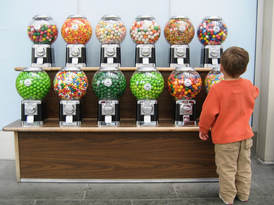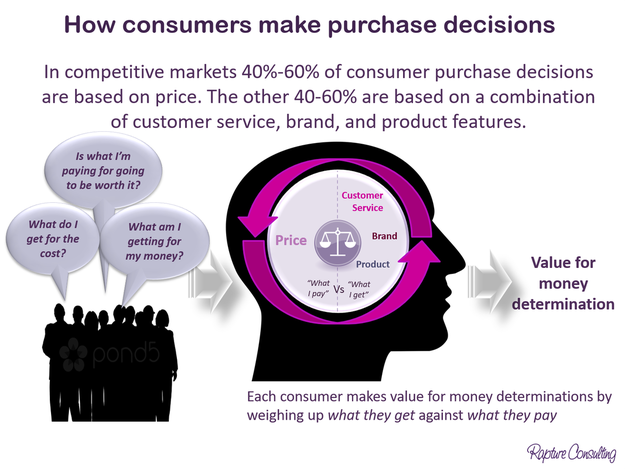 How do consumers make purchase decisions? What really matters to them when they buy? What leads them to choose one brand or product over another, particularly in competitive markets? After having done consumer research in all sorts of markets for all sorts of clients, I see the same answers time and time again. Everything consumers say drives their choices and everything they do can be classified into one of 4 areas - Price, Product, Customer Service, and Brand (image and reputation). Everything.
Consumers weigh up what they pay against what they get to determine whether something is going to be value for money. Depending on the individual and the market, these decisions might be deliberate and logical or they might be spontaneous and emotional. Both types of decision making should be explored. This 4-part model is useful to guide exploratory research in understanding what factors are involved in each of the 4 areas when consumers make a purchase decision. Then once all factors have been identified, the 4 part model can guide quantitative survey design in determining the relative importance of these factors. *Managing Customer Value: Creating Quality and Service That Customers Can See (1994), Bradley Gale. The Free Press, NY.
3 Comments
1/8/2018 01:31:29 am
You completed a few fine points there. I did a search on the subject and found nearly all persons will go along with with your blog.
Reply
1/3/2019 05:18:41 am
Consumers’ attitude towards the brand they buy will always depend on so many factors. We need to understand and respect their decision because they are the “consumers”. Most of the consumers buy items because they need it. Not all people are rich so they would check their budget to see what could be the item that can fit in within the budget on hand. Of course, it is a challenge! While there are some people who are choosing to stay strict with their buy, the rich ones can have everything they want!
Reply
30/5/2020 06:30:46 pm
Best work you have done, this online website is cool with great facts and looks. I have stopped at this blog after viewing the excellent content. I will be back for more qualitative work.
Reply
Your comment will be posted after it is approved.
Leave a Reply. |
AuthorDonna Bonde is the Owner and Director of Rapture Consulting. She consults to agencies and brands who want to better understand the way consumers think and behave. She bases herself in Sydney, Australia. Archives
May 2024
Categories
All
|
Proudly powered by Weebly


